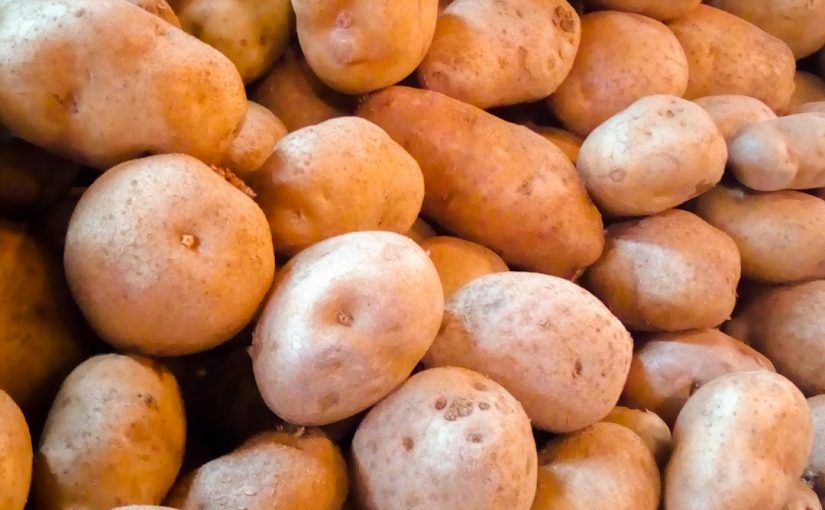Spotting mysterious white specks on your sweet potato can be a moment of hesitation for any home cook. Are they safe? What caused them? This common observation often raises questions about the quality and edibility of this nutritious root vegetable. Far from being a sign of spoilage, these white spots are usually a natural occurrence with simple explanations rooted in the sweet potato’s unique physiology. Understanding their origins can alleviate concerns and help you enjoy your sweet potatoes with confidence. This article will delve into the science behind these intriguing markings, exploring their common causes and implications for your kitchen, ensuring you can prepare your meals with certainty.
Deciphering the sweet potato’s internal structure
To fully understand why white spots appear on sweet potatoes, it’s helpful to first grasp a little about their fundamental composition. Sweet potatoes are storage roots, primarily designed to store energy in the form of starch. They are rich in complex carbohydrates, sugars, water, and various vitamins and minerals. The root’s flesh is made up of numerous plant cells, each containing organelles that store these vital components. Starch is stored in specialized structures called amyloplasts, which are essentially starch granules. When these cells are intact, the starch is uniformly distributed and appears as part of the potato’s smooth, colored flesh. However, any disruption or physiological change can alter how these internal components are perceived, sometimes making them visible as distinct white spots.
The science behind those visible white flecks
The appearance of white spots on sweet potatoes is typically attributed to a few natural and harmless processes, primarily involving the concentration or crystallization of its main components. The most common cause is the exudation or crystallization of starch. When a sweet potato is cut, bruised, or undergoes minor changes in temperature or humidity during storage, the starch granules can become more concentrated or visible at the surface or within the flesh. These tiny, dense packets of starch reflect light differently, appearing as opaque white spots. Similarly, sweet potatoes convert their starches into sugars during storage. These sugars, particularly maltose, can also crystallize, forming small, sugary white specks. Less frequently, minor physical damage or stress can cause localized cellular disruption, where the released cell contents might appear white. These are not signs of disease or spoilage, but rather a normal physiological response or a natural separation of cellular compounds.
Safety and culinary considerations for spotted sweet potatoes
For the vast majority of cases, white spots on sweet potatoes are perfectly safe to eat. Since they typically result from starch concentration or sugar crystallization, these are natural components of the vegetable itself. There is no health risk associated with consuming sweet potatoes exhibiting these characteristics. From a culinary perspective, these spots rarely impact the overall flavor or texture significantly. You might notice a slightly firmer texture in a starch-heavy spot or a touch more sweetness in a sugar-crystallized area, but these are generally minor differences. It’s important to distinguish these natural white spots from actual signs of spoilage, such as mold (which would appear fuzzy or discolored, often green or black), a soft and mushy texture, or a foul odor. If the spots are accompanied by any of these latter signs, then the sweet potato should be discarded. Otherwise, your spotted sweet potato is ready for cooking.
Here is a quick overview of common white spot characteristics:
| Appearance | Likely Cause | Safety for Consumption | Impact on Taste/Texture |
|---|---|---|---|
| Small, opaque, firm dots | Starch crystallization/exudation | Safe | Minimal; possibly slightly firmer area |
| Tiny, sometimes sparkly flecks | Sugar crystallization | Safe | Minimal; possibly slightly sweeter area |
| Slightly discolored or denser patches | Minor bruising or cellular disruption | Safe | Minimal; no significant change |
| Fuzzy, green/black, or slimy spots | Mold/Spoilage | Not safe | Significant; unpleasant taste and texture |
Preventing and managing white spots through proper care
While white spots are largely natural and harmless, proper storage and handling can help minimize their appearance and prolong the overall quality of your sweet potatoes. Sweet potatoes thrive in cool, dark, and well-ventilated conditions, ideally between 55-60°F (12-15°C). Avoid storing them in the refrigerator, as cold temperatures can cause their starches to convert to sugars more rapidly and can also lead to a hardened core, impacting flavor and texture. Furthermore, gentle handling is crucial to prevent bruising, which can sometimes lead to localized white spots or other damage. Keep sweet potatoes dry and separate them from other fruits and vegetables that emit ethylene gas, which can accelerate ripening and spoilage. By adhering to these simple storage guidelines, you can ensure your sweet potatoes remain fresh, firm, and largely free of unexpected white markings until you are ready to enjoy them.
In conclusion, those white spots you encounter on sweet potatoes are typically a harmless and natural phenomenon. Whether they manifest as concentrated starch deposits, crystallized sugars, or minor physical responses, these common occurrences do not generally indicate spoilage or compromise safety. By understanding the sweet potato’s internal workings and adhering to proper storage practices, you can confidently identify, manage, and ultimately enjoy this versatile root vegetable. So, the next time you spot a few white flecks, remember they’re usually just a part of the sweet potato’s unique charm, ready to be transformed into a delicious meal. Armed with this knowledge, you can confidently select and prepare sweet potatoes, appreciating their natural characteristics rather than questioning their freshness.
Image by: Enthusiast Nim
